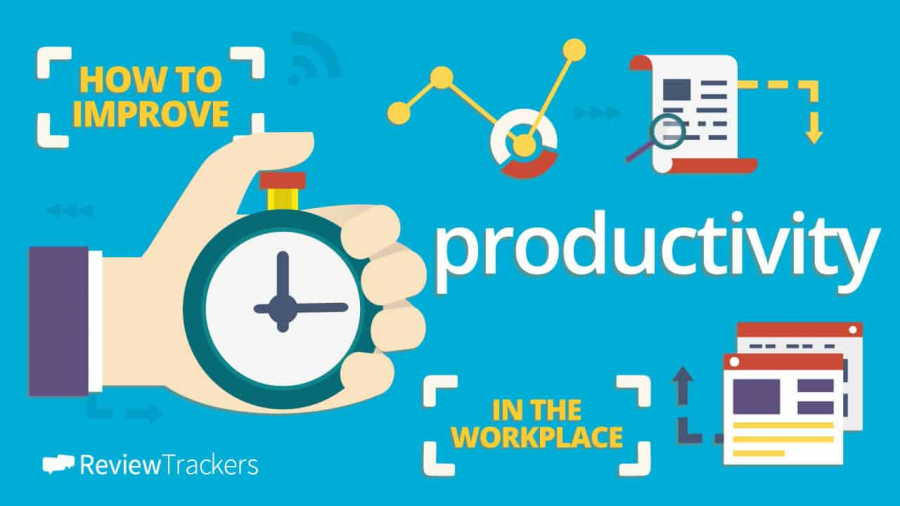5 Productivity Tips That Are Actually Tangible
March 8, 2021
If you are like me, you probably occasionally indulge in articles about productivity or self-help. “Hmmm, there could be something helpful in this,” you say, as you then proceed to waste a few minutes of your life reading it. Because often, it is a waste of time to read these articles, at least in a practical sense. There are plenty of genuinely-helpful lifestyle articles out there on the Internet. However, there are many that simply repeat the same tired-old tips that never seem to work. Some only work for other personality types and don’t seem like a fit for you. And much more commonly, these tips are nebulous and not helpful in actually getting something done. While often great for helping you think in the right way or be more mentally-healthy, that isn’t as useful in the moment when you need a practical tip that is actually actionable一something you can do rather than something to think. This list is my honest attempt to provide a few tips that are actionable, uncommon, and genuinely useful to you.
1. If something has been bothering you and it will take under 5 minutes to fix or do, do it right now.
Right now. Go do it. Put down this article and go clean your desk or whatever. I mean it. Come back when you’re done.
…
Alright? Good. Now we can resume. If you are anything like me, small tasks left undone can pile up and provide stress that makes larger tasks that much more difficult. Something like clutter in your workspace or laundry on your bed, for instance, can cause your mind to be just as disorganized as your room. And while these examples both pertain to organization and cleanliness, this tip works for other things as well. If there is a text or email you need to send, a form you need to sign, or a water bottle to fill, just dropping everything and doing that can be incredibly helpful for helping your stress level. Of course, there are two qualifiers. The first is to not do this when a deadline is fast approaching and literally every minute counts. If that assignment is due in two hours and it’ll take an hour, feel free to do this tip, but obviously don’t follow it during a quiz or a timed DBQ for APUSH. The second note of interest is to be careful that this doesn’t evolve into merely a different flavor of procrastination. If you clean four things in your room that take five minutes each, you aren’t really following this tip, as that is actually a new, single twenty-minute task. Feel free to do multiple five-minute sessions together, but always be mindful of the main goal. To be fair, even if this tip simply becomes advanced procrastination, it is better than wallowing in a mire of misery and stress, and at least you got something done. This advice also is incredibly synergistic in combination with the next tip on this list. But first, if you read this paragraph instead of doing “That Thing” earlier, go take five minutes.
…
Okay, are you done yet? Let’s move on to the next tip.
2. Eat the frog
This tip is taken from an article written by an entrepreneur with ADD as a part of a special type of meeting they say is very helpful in boosting team productivity. However, this tip can be used by anyone. Your “frog”, simply put, is that one important task that you have been putting off. The frog could be homework, sure, but it could also be any one of hundreds of tasks that you have been avoiding. If you’re anything like me, that “frog” could be something important that you are worried about doing, but it could also be something completely un-important that you have had trouble making yourself do for some reason. The article that introduced me to the “frog” concept advised that people spend 25 minutes in a collaborative meeting where everyone eats their own frog. While that isn’t as feasible outside of the workspace, taking a 25-minute segment every week or every day to eat the frog (and just eat the frog—even if some other task is more urgent and time-sensitive) will help keep your to-do list short and your brain unstressed.
3. Have others hold you accountable
For this tip, I do not mean situations where others hold you accountable because they are making you do something, like in the case of homework or chores. In those activities, this person-to-person accountability is already built-in (and sometimes, people pushing you to do activities you need to do anyway can make you reluctant). What I am referring to is this: people can be just as effective as a reinforcement (or more) in activities you don’t “need” to do. Next time you intend to do something and are worried, you will either procrastinate or become lazy and not do it, like going for a run or writing something, tell someone that you know. Sometimes they can remind you and get on your case if you want them to. However, even just telling someone else your intentions can help. Now, you feel like your plans are more tangible, and someone else knows about them and believes you will do them. It is easy to reject a plan you made up, but it is harder once it has “taken form” in the brain of another. This technique can also be used when you don’t want to do something, but you know you should. Now, having another person know about it will force you to get that troublesome task done.
4. Don’t double-dip leisure and productivity
“Hmm, this piece of homework is just rote repetition. I am going to watch YouTube while I do it,” can be a common refrain in some households. I am just as guilty of it as anyone else, if not more. However, the vast majority of times, doing this will come back to bite you. A five-minute math problem becomes thirty minutes while watching YouTube, for example. Besides the sheer time waste, there are other reasons to drop this habit. Obviously, the task will come out worse than if you had focused. You absorb less of the task’s usefulness if the task is something like practice problems. Even if you don’t care about the task, double-dipping impacts your leisure, too. Paradoxically, you might find that you lost time for your leisure by double-dipping. Rather than spending five minutes finishing your homework and then being free to watch YouTube for 25 minutes, you watch YouTube for 30 minutes while doing your homework…but your eyes were only actually watching the video for 10 minutes anyway, and you had to rewind multiple times. More importantly, it impacts your enjoyment of leisure. Why mar your enjoyment with your high stress level? Just finish what you have to do and take time off completely content. Of course, there are exceptions. I like to listen to podcasts while I do my laundry since I only need to use my brain for one task and my muscle memory for another. And while for most of us we are just fooling ourselves that music won’t distract us, some of you crazy people might actually work better with music. Don’t double-dip, or you’ll regret it.
5. Download the Forest app.
If this article were anywhere else, here is where you would roll your eyes and say, “Oh great, it’s a sponsored one.” While I might wish someone had sponsored me for this article, I am doing this act of community service for free (after all, the OP OMEGA doesn’t pay my bills either). Genuinely, the Forest app has been helpful for my productivity. It is most useful for those days when, despite your genuine best efforts, you somehow can’t seem to tear yourself away from social media on your phone. The Forest app has more going on than I’ll get into, but at its core, it is pretty simple. On the main screen is a timer that you can set for any time period between 10 minutes and 2 hours. Once you start it, a little virtual tree will start to grow. The longer the time period is, the more beautiful the tree is and the more of them there are. Basically, if you start messing around inside other apps for any substantial length of time (I’ve noticed that you can dash into an app to do something quickly, usually), your tree will die. This small incentive isn’t even real, but it is effective for a number of reasons. First of all, the sunk-cost fallacy/idea is working in your favor here, as you’ve already spent X amount of time growing this thing, and to ruin it wouldn’t seem right. There is also really interesting positive and negative reinforcement happening here. In terms of positive reinforcement, when the tree is done, it is added to your plot of trees (which you can customize). The app provides quick helpful redirections to stop you from just staring at Forest for some reason. You can also use the coins you build up to plant real-life trees, so that incentive exists too. The real power behind the Forest app, in my opinion, is the negative reinforcement. When you let your tree die, there is a quick message that expresses its disappointment at your failure and chastises you. More importantly, that withered tree that you abandoned gets planted in your plot with the rest. While you can remove the dead trees (what I call “tree corpses”) using the in-game coins you get from planting trees, it still mars this little place that you’ve built for yourself. Besides, the coins can be used to plant either in-real-life trees or to customize the type of plants you can grow, but you can’t do either of those things if your coins go into removing dead lumber. The app, despite having no real “bite” behind it and not being able to lock you down from leaving the app, is highly effective in helping me be productive.

